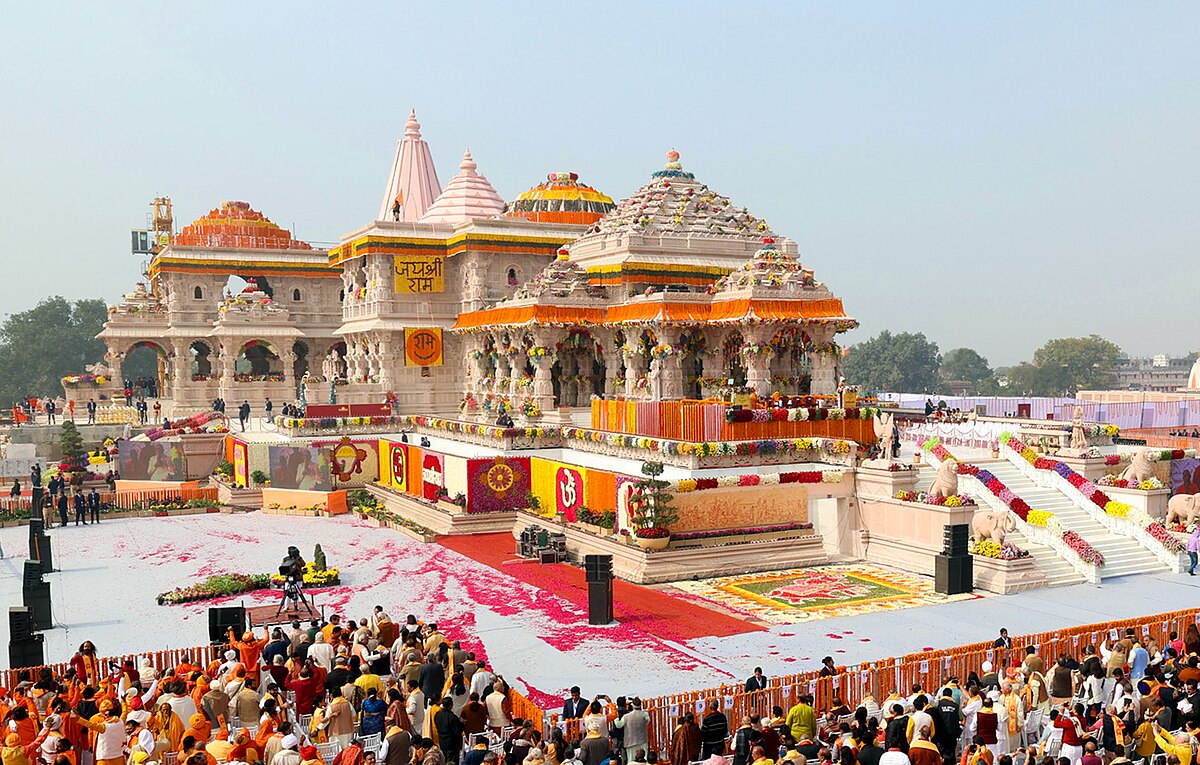- Gaumata/Cows
- 4976 views
The Ram Mandir in Ayodhya, a temple dedicated to Lord Rama, stands as a symbol deeply ingrained in the religious, cultural, and historical ethos of Hinduism and India. Its history, intertwined with faith and politics, spans several centuries, leading up to its contemporary significance and the vision for its future. This article delves into the rich tapestry of the Ram Mandir’s past, its role in Hindu religion, the tumultuous journey towards its reconstruction, and its implications for the future.

The Historical and Mythological Roots
Ayodhya and Ramayana
Ayodhya, believed to be the birthplace of Lord Rama, a major deity in Hinduism, is mentioned in several ancient texts, including the Ramayana. This epic narrates Rama's life, his righteousness, his exile, and the battle against the demon king Ravana. Ayodhya, as described in these texts, is not just a geographical location but a significant spiritual center.
The Ram Mandir Through the Ages
The first Ram Mandir at this site is said to have been built thousands of years ago, but historical records of the temple begin in the medieval period. Over the centuries, the temple underwent destruction, reconstruction, and modifications under various rulers, reflecting the turbulent history of the region.
The Battle for the Ram Mandir
The Dispute
The conflict over the Ram Mandir site is a complex blend of history, religion, and politics. It centers around the claim that a 16th-century mosque, the Babri Masjid, was built on the ruins of the original Ram Mandir. This dispute led to prolonged legal battles, communal tensions, and violence, culminating in the demolition of the Babri Masjid in 1992, an event that triggered widespread communal riots across India.
Legal Proceedings and the Supreme Court Verdict
After years of legal wrangling, the Supreme Court of India delivered a landmark judgment in November 2019. The court ruled that the land should be handed over to a trust to build the Ram Mandir, while providing an alternative site for the construction of a mosque. This judgment was seen as a pivotal moment in the dispute, aiming to balance religious sentiments and historical claims.
The Importance of the Ram Mandir in Hindu Religion
A Symbol of Faith and Unity
For millions of Hindus, the Ram Mandir transcends its physical structure, symbolizing the essence of their faith, cultural identity, and the virtues of Lord Rama. It's a place that epitomizes dharma (righteousness), bhakti (devotion), and the idea of Ram Rajya (a just and moral society).
Pilgrimage and Worship
The Ram Mandir is expected to become a major pilgrimage site, attracting devotees from around the world. It is anticipated to be not just a place of worship but a beacon of Hindu culture and spirituality.
The Ram Mandir Today and Its Future
Construction and Architecture
The construction of the new Ram Mandir, following the 2019 verdict, is underway with a design that pays homage to traditional Hindu architectural principles. The plan includes a grand structure with multiple spires, an expansive courtyard, and intricate carvings depicting scenes from the Ramayana.
Economic and Social Impact
The Ram Mandir is poised to significantly impact the region’s economy, boosting tourism, creating jobs, and fostering communal harmony. It's seen as a catalyst for the socio-economic development of Ayodhya and its surroundings.
A Symbol of National Pride
Beyond its religious significance, the Ram Mandir is emerging as a symbol of India’s rich heritage and cultural diversity. It represents a confluence of faith, history, and the ethos of the Indian civilization.
The Ram Mandir in Ayodhya is not just a temple; it's a symbol of the collective consciousness of Hinduism and a testament to India's historical and cultural legacy. As the temple rises, it carries with it the hopes and aspirations of millions, representing a future where faith and history coalesce to forge a new path of unity and prosperity. Its significance in the Hindu religion and its role in shaping India's future cannot be overstated, as it continues to be a beacon of devotion, cultural identity, and national pride.
